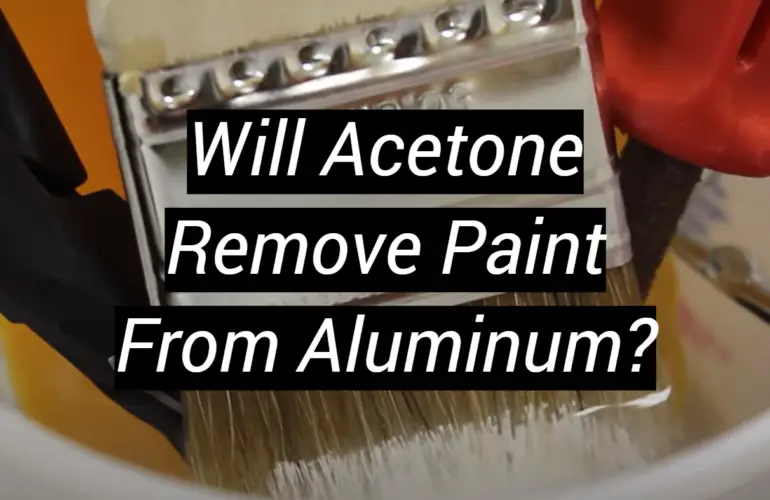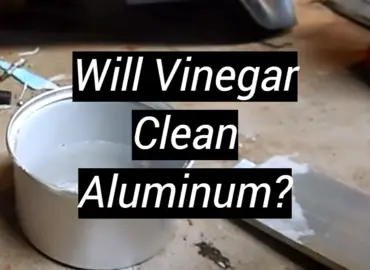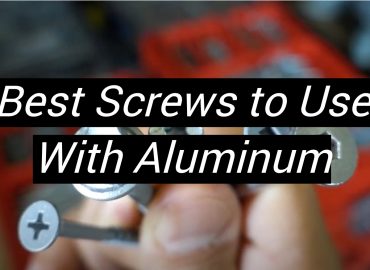Are you looking to get rid of paint that’s been stuck on aluminum for too long? Recently, many people have tried using acetone as a way to remove it, but is this really the best option? In this blog post, we take a look at different ways to remove paint from aluminum so that you can achieve the desired results quickly and efficiently. We’ll cover topics such as whether or not acetone is suitable for use in removing paints and other techniques for successfully doing so. Read on to learn more!
Is It Easy to Paint Aluminum?
Painting aluminum can be a tricky process. The surface of the metal is very slick and makes it difficult for paint to adhere properly. Additionally, because aluminum is exposed to extreme weather conditions and other elements, it can cause the paint to peel or deteriorate quickly unless proper measures are taken.

In order to ensure a successful painting job on aluminum surfaces, you must take some special steps when preparing the surface beforehand. This includes cleaning the metal with a degreaser before sanding it down with fine-grit sandpaper in order to create a roughened texture that will help paint stick better. Once this step is complete, you should use an aluminum primer in order to prevent any corrosion that could occur due to exposure to the elements. Finally, you should use a high-quality paint designed specifically for metal surfaces in order to get the best results.
It is important to note that painting aluminum requires a great deal of preparation and patience. It may take several coats of paint before you get the desired finish, so it’s important to be patient and take your time when attempting this project. With careful preparation and patience, painting aluminum can be an achievable task that can give your home or business a fresh look. [1]
What Aluminum Constructions Need to be Painted?
Aluminum constructions need to be painted if they are exposed to the elements. This includes outdoor decks, fences, siding, and trim pieces. Additionally, aluminum window frames and doors may also need to be painted in order to prevent corrosion and maintain their aesthetic appeal. If you are unsure whether or not a particular piece of aluminum should be painted, it is best to consult an expert before proceeding.
In general, painting aluminum can provide protection against damage from extreme weather conditions as well as add a decorative finish. With careful preparation and patience, painting aluminum can be done successfully with great results. However, it is important to understand that this project requires special steps in order for the paint job to last long-term. Taking the time to properly prepare the surface and use quality paint designed for metal surfaces will ensure a successful painting project that looks great for years to come. [2]
Benefits of Painting Aluminum Items
Painting aluminum items has several benefits that make it an attractive option for many different projects. First, painting aluminum provides a layer of protection against corrosion and other environmental elements.
Painting can also improve the overall aesthetic appeal of the item, making it more visually appealing to potential customers or users.
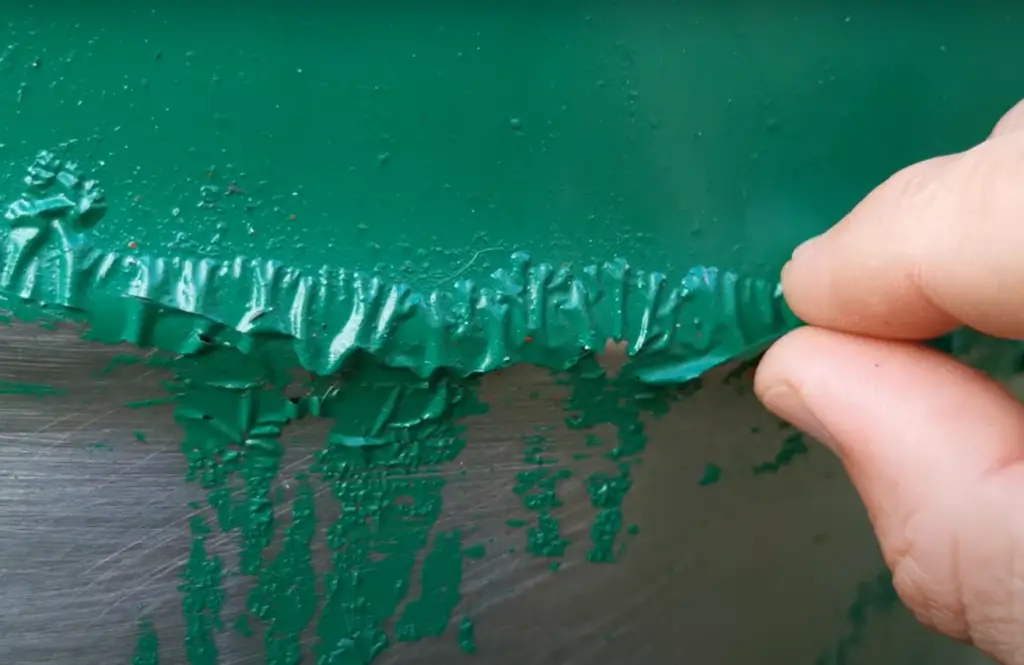
Besides, it can help increase its lifespan by providing a barrier from physical wear and tear. Finally, painting can help reduce costs associated with maintenance and repairs since it may not need as much attention in order to remain functional and attractive over time. Overall, painting aluminum is an ideal solution for those looking to enhance the appearance and durability of their products or projects while staying within budget. [3]
Why and When To Remove Paint From Aluminum?
Removing is often necessary to make repairs or refinish a piece of metal.
There are several reasons why you would want to clean up paint from an aluminum surface. For example, if you’re refinishing a metal item such as an outdoor furniture set or patio railing, you’ll likely want to start by removing any old paint before applying new coats. You might also need to remove existing paint if there’s rust or corrosion underneath that needs to be addressed. In addition, stripping away old layers of paint can help restore the original appearance of the aluminum surface and provide a better base for a fresh coat of paint.
When it comes to the best methods, you’ll want to consider the condition and type of paint that’s been used. If the paint is in good condition but you just need to remove a few layers or touch up an area, light sanding may be enough. For tougher jobs, such as removing multiple layers of old or deteriorated paint, chemical strippers are often your best bet. [4]
What Are The Ways To Clean Paint From Aluminum Things?
There are several ways to clean paint from aluminum items. Depending on the type of paint used, some methods may be more effective than others.
- Using a Chemical Stripper: Start by using a chemical stripper like methylene chloride or other similar chemicals to loosen and remove any existing paint that is present on the aluminum item. Be sure to wear protective gloves when working with these chemicals as they can be toxic and cause skin irritation if not handled properly.
- Sanding: If the paint does not come off easily with a chemical stripper, you can try sanding it off gently with fine-grit sandpaper or steel wool. This method works best for latex paints but may also work for enamel or other types of paint.
- Scraping: Using a plastic scraper, you can scrape off any remaining paint that is stuck to the aluminum item. This works best for more stubborn paints such as epoxy and enamel paints.
- Hot Water and Soap: If chemical strippers, sanding, and scraping do not work, you may want to try using hot water and soap to remove the paint from the aluminum item. Fill a bucket with hot water and add some dish soap or laundry detergent into it. Then submerge your aluminum object in this mixture for about 10 minutes before scrubbing away any remaining paint with a brush or sponge.
- Pressure Washer: A pressure washer can be a great tool for removing stubborn paint from aluminum items. Be sure to keep the nozzle of the pressure washer at least three feet away from the item you are cleaning to avoid damage.
- Vinegar: It is a more eco-friendly method. If the paint is still not coming off, try using vinegar to loosen it. Mix equal parts of white vinegar and water in a spray bottle and apply this solution directly onto the affected area. Wait for 10 minutes before scrubbing away any remaining paint with a brush or sponge.
- Baking Soda: Mix two tablespoons of baking soda with one cup of water and apply this paste directly onto the affected area. Let it sit for a few minutes before scrubbing away any remaining paint. [5]
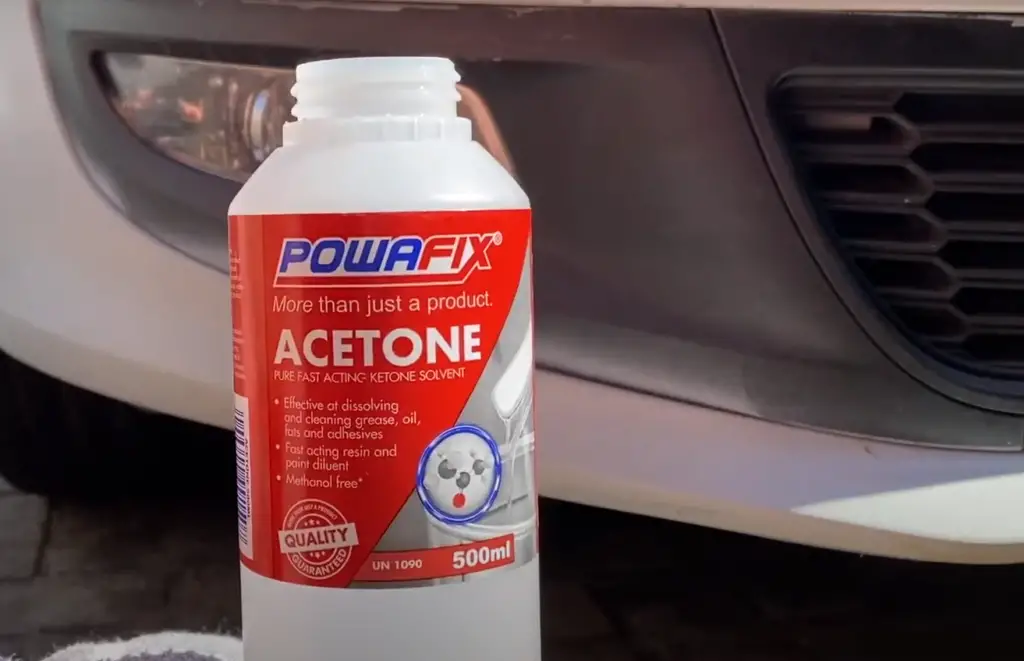
Note! Before trying out any cleaning method, make sure to test it on an inconspicuous area to avoid causing any damage.
Acetone As Paint Remover
Acetone is a highly effective paint remover and can be used to remove almost any type of paint from any surface. It is fast-acting, non-toxic, and relatively affordable compared to other paint removal products. To use acetone as a paint remover, you will need a few supplies including acetone, rags or paper towels, and plastic drop cloths for protection. [6]
To ensure safety during this process, always wear gloves when working with acetone and make sure your workspace is well ventilated. Additionally, be aware that some paints may contain hazardous chemicals which can be released into the air when using acetone as a remover.
Steps On How To Strip Paint From Metal With Acetone
- Prepare the work area: Make sure you have plenty of fresh air and a clean workspace to work in. Put down a tarp or drop cloth to protect any surfaces that might get splashed with acetone, such as the floor or countertop.
- Wear protective gear: Use gloves, safety goggles, and a breathing mask when working with any form of paint stripper or remover. Acetone is highly flammable and can be hazardous if inhaled for long periods of time.
- Apply the acetone: Pour some acetone into a container and dip your paintbrush in it before applying it directly onto the metal surface from which you want to strip away the paint. Be sure to apply the acetone in an even and uniform manner.
- Allow the acetone to work: Wait 10-15 minutes for the acetone to do its job and start loosening up the paint.
- Start scraping away: Use a metal scraper or putty knife to scrape away as much of the paint as possible, being careful not to scratch or damage the metal surface underneath.
- Rinse off with water: When you’re done scraping away the paint, rinse off any residue with warm water and let it dry completely before applying a new coat of paint if desired.
- Clean up your workspace: Dispose of any used rags or containers full of acetone in a safe manner and make sure to clean up any spills quickly to avoid any lingering fumes.
- Store your acetone properly: Make sure to keep your container of acetone tightly sealed and out of reach of children or pets when not in use. [7]
There you have it! You now know how to strip paint from metal with acetone safely and effectively. Be sure to always wear the appropriate protective gear, take all necessary safety precautions, and clean up any spills quickly for best results.
Risks Associated With Using Acetone To Clean Up Paint From Metal
- Acetone is highly flammable – If the environment in which acetone is used has any sort of open flame or spark, it could cause a dangerous fire. It’s important to make sure that all sources of fire are removed from the vicinity before beginning the paint removal process with acetone.
- Acetone may damage surfaces – Though it can be useful for removing varnish, acetone can also damage many types of metal surfaces if not used properly. To avoid this, always test a small area of the surface first before using acetone on any large portion of the surface.
- Acetone creates hazardous fumes – When using acetone, it’s important to make sure the area is well-ventilated. Acetone produces dangerous fumes that can be hazardous to health if inhaled for long periods of time. Additionally, acetone should never be used in a closed environment as these fumes can build up in such an environment and become even more toxic.
- Acetone can corrode metal – If not used properly or left on the surface for too long, acetone can cause corrosion on certain types of metals, making them brittle and prone to cracking or breaking during use. It’s important to follow the instructions provided with any acetone product carefully before using it on metal surfaces, especially those made of softer metals like aluminum or copper.
- Acetone can be poisonous – Ingesting, inhaling, or coming into contact with acetone can cause poisoning and other health problems. It’s important to wear protective clothing and gloves when using it, as well as making sure the area is adequately ventilated. Additionally, any unused product should be disposed of properly to minimize any potential risks associated with exposure to acetone.
- Acetone may not remove all paint – Depending on the type of paint being removed, acetone may not completely erase a layer of paint or provide the desired level of smoothness that many users are looking for. For best results, use a combination of methods such as sanding or chemical stripping agents in order to achieve the desired effect.
- Acetone may require additional protective gear – Depending on the type of acetone being used and the metal surface it is applied to, some users may need to wear additional protective gear such as a face mask or respirator in order to protect themselves from exposure to fumes and other hazardous substances. Plus, it’s essential to ensure all necessary safety precautions are taken when using any kind of chemical product for paint removal. [8]
Will Acetone Damage Aluminum?
The short answer to the question is: YES. Acetone is highly corrosive and can cause both surface and structural damage to aluminum over time.
It’s important to note that while the effects of long-term or frequent exposure may be more serious, even short exposures can damage your aluminum in some cases. Therefore, it’s best to avoid using acetone on aluminum whenever possible.
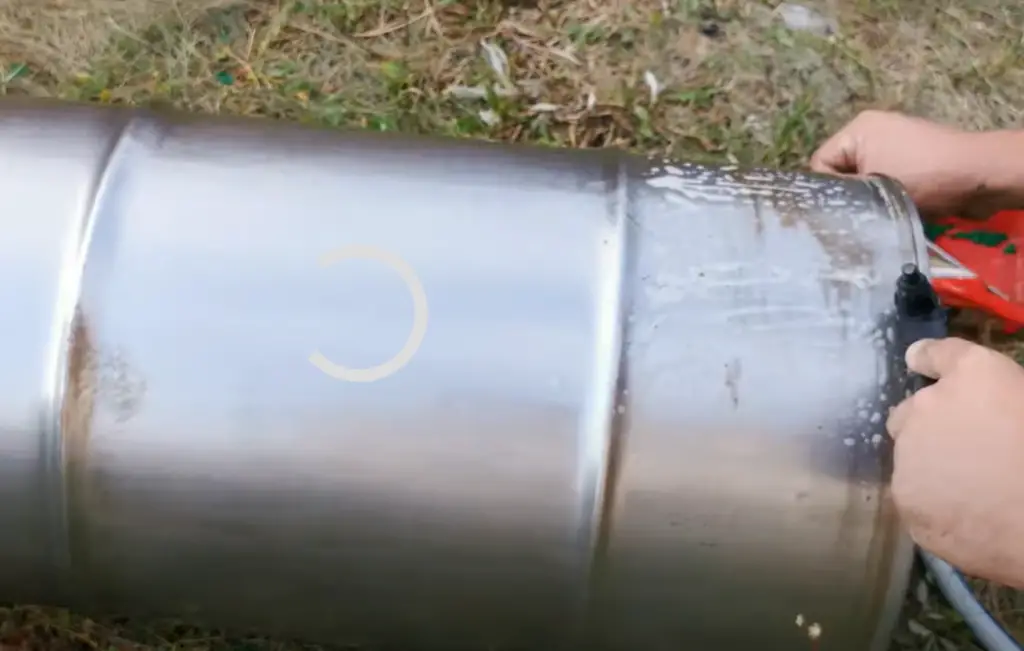
If you must use acetone on an aluminum surface, there are a few precautions you should take in order to minimize its damaging effects. First of all, make sure that the surface is completely clean and free of dirt or other debris before applying acetone. This will help to ensure that the acetone can penetrate as deeply into the aluminum as possible without causing any additional damage.
You should also make sure to apply a protective coating or sealant after you’re done using the acetone. This will help to protect the metal from further corrosion due to exposure to moisture or other elements in the environment. Additionally, it’s important to keep your aluminum out of direct sunlight for extended periods of time, as this can accelerate its deterioration over time. [9]
In conclusion, while it is possible for acetone to cause damage to aluminum, this risk can be reduced by taking appropriate precautions such as cleaning the surface before use, applying a protective coating after, and avoiding direct sunlight. By taking these steps, you can minimize the risk of damage to your aluminum from acetone exposure.
FAQs
Can paint remover be used on aluminum?
Paint remover should not be used on aluminum because it can cause permanent damage to the metal surface. It is best to use a product specifically designed for removing paint from aluminum surfaces. Additionally, using sandpaper or other abrasive materials may also help remove paint from aluminum surfaces without damaging them. If the paint does not come off with either of these methods, you may need to consult a professional for further assistance.
What eats paint off aluminum?
The most common and effective method is to use a chemical stripper. These are specially formulated products designed to dissolve the bond between paint and metal surfaces such as aluminum.
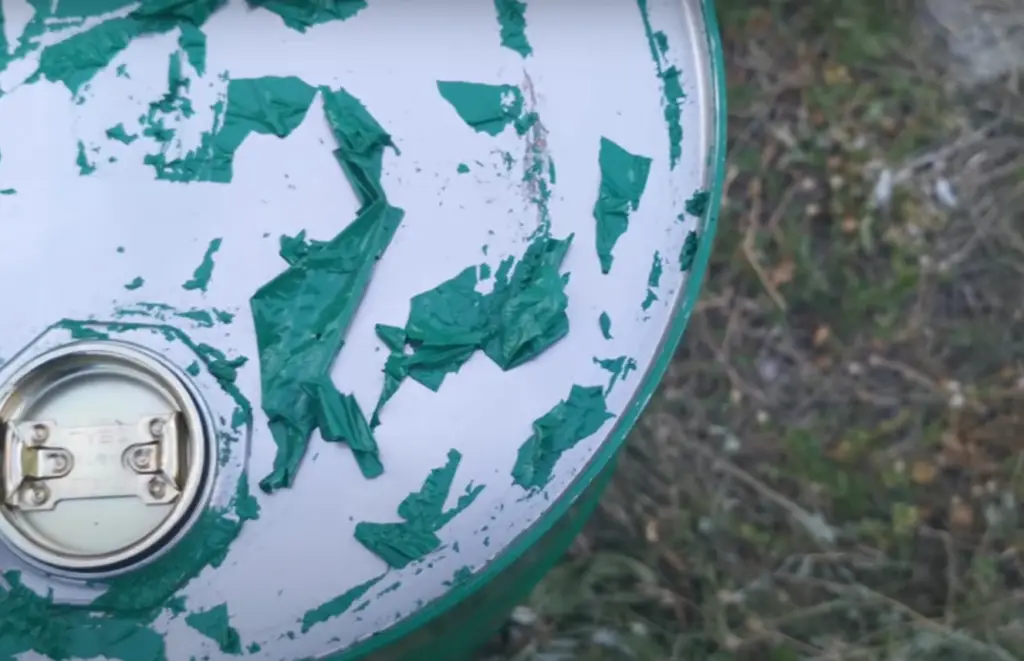
To use a chemical stripper, follow the instructions on the product label carefully, including safety precautions like wearing gloves and protective eyewear.
Does 100% acetone remove spray paint?
Yes. However, it is important to note that while acetone is strong enough to dissolve the paint, it may cause damage like discoloration or stripping of the underlying surface.
What kind of paint does acetone remove?
Acetone can be used to remove most paint types (oil-based paints, latex paints, acrylics, enamels, and urethanes). Remember about testing the acetone on a small area of the painted surface before using it on larger areas to make sure that it will not damage or discolor any underlying materials. Additionally, acetone should never be used on surfaces with plastic components as it could cause melting or other damage.
Useful Video: How To Remove Paint Off Your Rims (Fast,Easy,Effective)
Summing Up
In conclusion, it is evident that aluminum painting can be a tricky task. However, with the right method and materials, you can easily achieve the desired result. Acetone could potentially cause corrosion to the surface. Therefore, gentle methods such as using a microfiber cloth dampened with warm water should be used instead. Moreover, ensuring your space is well ventilated before beginning any type of painting procedure will reduce your exposure to harmful chemicals or fumes while allowing for the paint to dry quicker. Finally, if you have any more questions regarding aluminum painting or other home improvement projects, reach out to your professionals for help in order to get the best results. Good luck!
References:
- https://www.thyssenkrupp-materials.co.uk/index.html/technical-knowledge-hub/painting-aluminum
- https://www.gdasindustries.com/use-of-aluminium-in-building-and-construction/
- https://civilinfo.net/aluminium-paint-detailed-information/
- https://paintsprayed.com/remove-paint-from-aluminum/
- https://www.diygeeks.com/how-to-paint-aluminum/
- https://www.ehow.com/how_4923030_use-acetone-remove-paint.html
- https://www.nipponpaint.co.in/steps-to-remove-paint-from-any-metal-surface/
- https://www.medicalnewstoday.com/articles/what-is-acetone
- https://thecampingadvisor.com/can-you-use-acetone-on-aluminum/

